
by Mx. Kris Vyas-Myall
Digging it
On the Ecuadorian coast, the Valdivia archeological site is creating a great stir in the academic world. Renowned American archeologists Clifford Evans and Betty Meggers (along with colleagues from the Smithsonian) have put out a paper in Scientific American claiming the artefacts on the site bear a strong resemblance to those from Japan in the same period (c. 3000 BC).

This conclusion is disputed by other archeologists, who claim the finds are of native origin, but whichever is the truth it is likely to rewrite our historical understanding. If the site is Asian in origin it shows both an advanced degree of navigation and Asian influence on the development of the Americas millennia before the arrival of Europeans.

Alternatively, if the site is indeed of native finds it will add to the continued evidence of a thriving advanced Americas at a time when Egypt was still trying to domesticate the camel.
Trying to rediscover and reinterpret is just as important in science fiction as it is in archeology. As such I was excited to discover Irene Shubik was reviving the format of ABC’s Out of This World for a series on BBC2, under the new title Out of the Unknown.
Travelling Into The Unknown
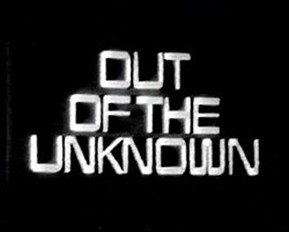
There are a couple differences between Unknown and World I want to point out before we start. Firstly, there is the obvious format point, that there is no longer a presenter to introduce each story as we usually expect on these anthology shows (although apparently a robot was considered for some time). More importantly are the stories themselves. Whilst World tended to choose faster paced stories more likely to entice the casual viewer (e.g. Asimov’s Little Lost Robot and Dick’s Impostor), Shubik seems to have selected more slower and meditative pieces, to really explore concepts.
As this is an archeological dig, I want to divide this series into three periods:
Episodes 1-4: An Emerging Concept
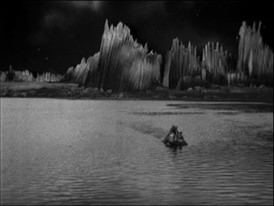
I think it is appropriate to start with the opening shot of the first episode (No Place Like Earth) of a lone human sailing across a sea on Mars to visit a native Martian. This divided viewers with some annoyed that the series was taking such an unscientific approach, whilst others loved the fairy tale quality of this fable. Personally, I was in the latter camp, just enjoying seeing something very different from the usual.

For those unimpressed with Wyndham, they got to enjoy The Counterfeit Man, which felt like a hangover from Shubik’s previous series. It is a tense tale of an alien impostor on a spaceship heading back to Earth and the attempts to discover who it could be. But there seemed little point to it other than atmosphere.
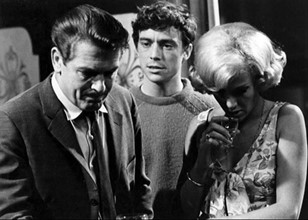
The same can be said of the first of the two original contributions to the series, A Stranger in the Family, which would probably not feel out of place in New Worlds magazine. Telling of a teenager with incredible psychic powers and the corrupt means to which they are put. It is certainly unnerving, but comes to naught except showing the corruption of power.
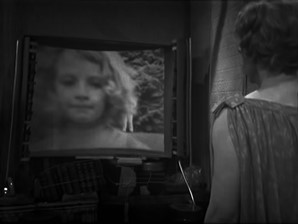
The final of this early quartet is The Dead Past from Shubik’s favorite writer, Issac Asimov. In this we get one of the best encapsulations of the strengths and flaws of the early period. It is a faithful adaptation of a problem story with a twist in the tail and gets across the themes of nostalgia and privacy, with good actors bringing it to life. However, it does not stray from the text by more than half an inch and the episode is largely just people debating ideas in front of dull backgrounds.
It is notable that with these four stories together you get many of the standard concepts used in science fiction writing. An Earth apocalypse, alien worlds, oppressive society, doppelgangers, spaceships, psychic powers, time travel, dangerous inventions and more.
If nothing else this gives viewers the vocabulary to help them through what is to come.
Episodes 5-8: The Dark Ages

Unfortunately, this is where things start to go wrong.
There are some technical issues we need get out of the way. Halfway through the transmission of Time In Advance the broadcast cut out, and we were instead treated to some Joan Baez music whilst we waited for the problem fixed. Also, the lighting in much of Sucker Bait was just abominable, even on the new 625-line broadcast resolution, it was impossible to tell what was going on in some sections. I found I had to rely instead on the dialogue and I had trouble really understanding what was happening on screen.
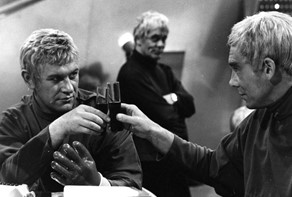
However, the real problem with the stories selected and the direction the production team take them. Time In Advance by William Tenn is an inherently silly concept to begin with. What if you could serve time on a hazardous planet in exchange for a free pass for a future crime? The conclusion being, maybe the crime you committed wouldn’t go as planned. And whilst the technical issue above may have resulted in things being missed by myself, the whole logic played out in front of us seemed contrived.

The second original play also seems to have no direction to it. Come Buttercup, Come Daisy, Come…? is the story of a man obsessed with his tropical flowers, sent to him by a mysterious advert, which may be eating people… or he may just be mad. Neither conclusion would be satisfying nor make much sense. When silly spy comedy The Avengers does something better with the concept, you probably should take another look at your scripts.
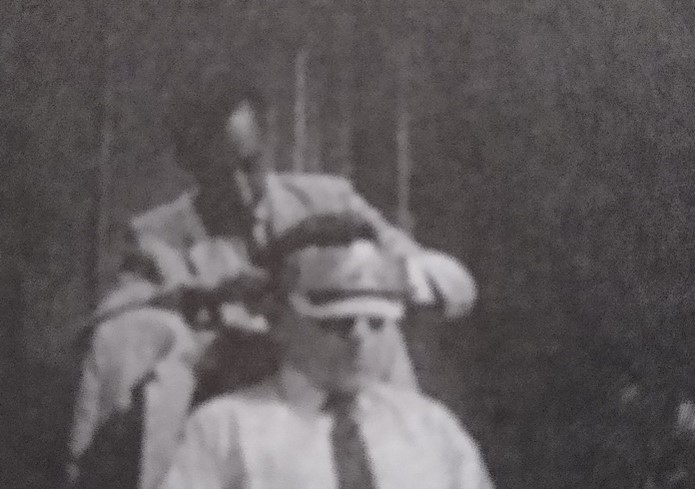
However, the two worst offenders are from the two biggest names, Ray Bradbury and Isaac Asimov. Neither The Fox and The Forest, nor Sucker Bait have enough in the original text to justify their inclusion here. Bradbury’s piece is barely more than a vignette and Terry Nation seemed to think the best solution was just to keep stretching the plot out until the conclusion without adding anything more.
Sucker Bait, on the other hand, is a long novella, but the story is largely told through arguments in small rooms on a dingey spaceship. Whilst this may be fine for a piece of text (although I personally dislike the magazine serial) it does not make for compelling television. What is worse, the main character is a human computer, meaning most of the expositing we are getting is from someone meant to lack normal characteristics and mannerisms.
It would be easy to conclude at this point the series had fallen down without hope of getting up. However, after these missteps, something wonderful happens.
Episodes 9-12: The Renaissance
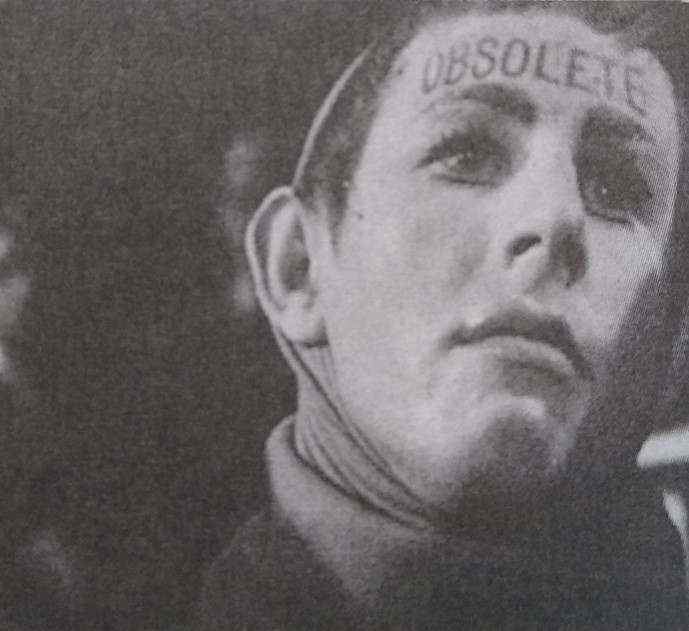
Andover and the Android and The Midas Plague succeed in a similar way. The writers (Bruce Stewart and Troy Kennedy Martin respectively) are much more willing to take liberties with the original stories to great effect and produce dark satirical comedies. Both of these episodes, I would argue, are better than the original texts. The Midas Plague, in particular, should be called out for its excellent use of modern maxims turned on their head to highlight the ridiculousness of our consumer society.

Our own John Boston gave the short story of Some Lapse of Time a four-star review and it is indeed an excellent choice to adapt, by combining a creepy atmosphere, an unfolding mystery and a single concept added into a contemporary society. However, this adaptation tightens up some of the looseness of the original story and Roger Jenkins excellent direction of the dream sequences really helps connect everything together.

Finally, Thirteen to Centaurus is a fantastic character piece, using largely the same story as was published in Amazing (which was given four stars by John once again) albeit with a different ending, we get to see the multiple twists in the tale unfold. But the excellent performances by Donald Houston and James Hunter, elevate this story into an excellent character study where we see power dynamics invert and their senses of reality change.
A Rich History

Overall, watching this series is like reading a great anthology. Not all stories will be to my tastes, but they are varied enough to complement each other and give a good picture of science fiction. A second season has already been commissioned, and so, just like with many of the other British anthologies that are ongoing, I look forward to the next release.
One last addendum, whilst the BBC appears to be hopeful of a US sale, others are not as optimistic. Isaac Asimov writing to Shubik:
It does make me long to see the show. I am terribly afraid that you haven’t made any of them sufficiently badly to interest American TV producers.
Let us hope The Good Doctor’s cynicism is not warranted and this gem of a series can be shared with the rest of the world.

